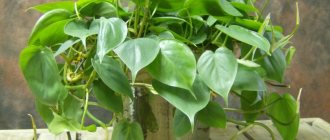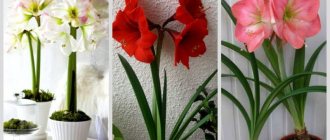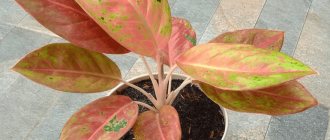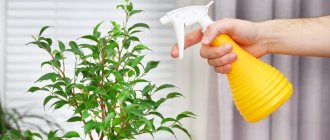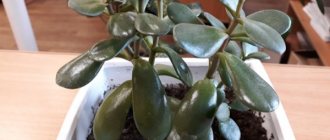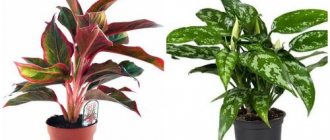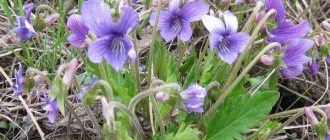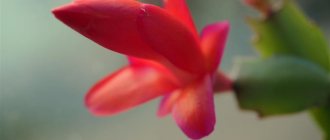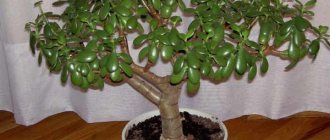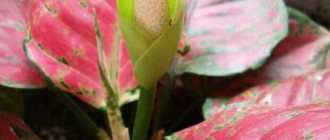We bring to your attention: aglaonema - varieties, names, photos. Bright, elegant and at the same time relatively unpretentious and easy to care for, aglaonema has deservedly soared to the top of the charts of indoor plant lovers.
The abundance of varieties and variety of leaf colors - from white to bright crimson and almost black, with a border, speckled, striped, tricolor - as well as the valuable ability to improve the air quality in the apartment, make aglaonema a magnificent green friend for every taste and all occasions life.
Aglaonema was initially brought to Russia from Dutch nurseries, where it came from Asia. Initially, it was possible to buy aglaonema mainly only with green leaves. In the last few years, Aglaonemas have been coming to us directly from nurseries in Southeast Asia, where they are extremely popular and amaze with the brightness of their colors.
The main Asian producing countries of variegated aglaonema varieties are Thailand and Indonesia. And the green variety, popular in China, which is known as Chineese evergreens, is often found in our country under the name Aglaonema Maria.
We show the variety of types and varieties of aglaonema with names and photos. The selection includes many Asian varieties from Thailand and Indonesia, plus classic old varieties.
Aglaonema - varieties with green leaves - Green, Green, Green
The first to appear on the Russian flower market were Aglaonem varieties with green leaves. They still remain popular, although compared to their colleagues with red and pink leaves they look more modest.
Maria / Maria Aglasha, with whom it all began for many. The discreet charm of a green leaf with a light pattern.
Aglaonema Maria
Silver Bay / Silver Bay
A classic of the genre among green varieties, it was also one of the first to become available in Russia.
Aglaonema Silver Bay
Silver Queen / Silver Queen, or Silver Queen
An ageless classic, expressive and bright, despite the green color of the leaves.
Aglaonema Silver Queen
Aglaonema Stripes / Stripes, or striped
An old variety with delicate light green stripes.
Aglaonema stripes
Freedman Friedman, aka Cecilia or Gabriel
The variety periodically appears under several names depending on the nursery producer, but the essence is the same: a light green leaf with a darker edge.
Aglaonema Freedman
Sundrop / Sun Drop, or Solar Drop
Aglaonema Sundrop
Tricolor / Tricolor The most expressive variety of the green classics is Aglaonema painted tricolor. Requires more attention than other green varieties. With a lack of light, the spots lose their severity.
Aglaonema Pictum Tricolor
Green Ball / Green Ball, or Green Ball Without much imagination, this variety was named for the round shape of its leaves, which is completely uncharacteristic of aglaonema, which is why it is the object of desire for aglash connoisseurs.
Aglaonema Green Ball
Flamingo / Flamingo
Leathery, dark green leaves with pinkish edges look stern.
Aglaonema Flamingo
Bamboo / Bamboo
A variety whose main advantage is its super-narrow leaves, which are quite rare in aglaonemas.
Aglaonema Bamboo
Full Moon / Full Moon, or Full Moon
Aglaonema Full Moon (Indonesia)
Happy Girl / Happy Girl, or Happy Girl
Aglaonema Happy Girl
Caring for aglaonema at home
At home the plant feels great. The main thing is to remember that this is a southern plant, and it needs to recreate the atmosphere of the tropics. If you almost ruined the plant, you can always propagate it by cuttings.
Pot size
Since the plant is rarely replanted, once every 3-4 years, for young plants the pot should be wide enough, “for growth”. Tropical plants have roots that fill the pot very quickly and are comfortable in tight spaces.
But if the pot is too small, then the roots of the aglaonema will simply become deformed, and the flower will hurt.
Priming
The soil should be loose, airy, and absorb moisture well. Ready-made soil for bulbous plants is suitable. Or, you can make the soil yourself from garden soil, peat, perlite or sand in a ratio of 1:2:1. You can make a mixture of rotted leaves, turf, peat, perlite or sand - 2:1:1:1.
Illumination
The flower does not like direct sunlight; it can get burned under it. Do not place aglaonema on the windowsill of a south-facing window. But diffused light or even partial shade is perfect for solid green varieties.
Variegated varieties and varieties with shades of pink may lose their brightness and mottled appearance if there is not enough light. In winter, it is better to add additional light to the plant, because the unfolded leaves, which do not immediately turn red, will no longer change their color with the onset of spring.
Temperature
The optimal temperature in summer will be 20-25 degrees. In winter, the plant will be comfortable at 16-18 °C, but hardening at temperatures below 10 °C is not recommended. The plant is afraid of drafts, but it won’t be very comfortable in a stuffy kitchen.
How to water
Be sure to water with warm, soft water - settled, melted, rain. Water as soon as the top layer of soil dries out, especially during the growing season - spring and summer. In winter, it is better to water after a few days, when the top layer of soil dries out.
If the plant is hardly watered in winter, it can be kept in a cool room at a temperature of +10 degrees.
Air humidity
Aglaonema requires high air humidity in its maintenance. In a dry room, the tips and edges of the leaves will dry out, and new ones will grow slowly. Spray the plant with a spray bottle periodically.
It would also be a good idea to place a pot of aglaonema on a tray with wet expanded clay or pebbles so that the water evaporation rises to the leaves. Just make sure that the water does not touch the bottom of the pot, otherwise the roots may rot.
In winter, spraying is necessary only if the plant is warm.
Fertilizer
Aglaonema needs to be fertilized from early spring to late summer. Fertilizers must contain potassium and nitrogen, and there should be no lime. They need to be applied once every 2 weeks, alternating organic with mineral ones. Fertilizing should be done immediately
after watering. You can also apply fertilizer by spraying. But do not forget that the plant must be removed from the sun before the drops dry.
In winter, you should never fertilize, the plant is resting!
Transfer
Young plants can be replanted every spring, but this is not necessary. Adult plants are replanted every 3-5 years, with anti-aging pruning if necessary. You can understand that a transplant is necessary by the fact that the roots will completely entwine the earthen ball. (h3) anti-aging pruning
Over time, the plant's trunk becomes bare. This is a signal that the flower needs anti-aging pruning. Trim the top of the plant with a sharp, disinfected knife, dusting the cut areas with charcoal powder.
We leave the stump and wait for renewal buds to appear. And we root the top in water with activated carbon to avoid souring. Or the top can be immediately planted in moist soil.
Is Aglaonema poisonous?
The plant is poisonous. Its juice irritates the skin and mucous membranes and can even cause a burn. Therefore, replanting and pruning must be carried out with gloves, and after work, wash your hands with soap.
The pot with the plant should be positioned so that children and pets cannot drop it and tear off the leaves.
The benefits and harms of aglaonema
This plant has a good effect on human health, since with proper care (sufficient humidity) it releases substances that can purify the air. According to Feng Shui aglaonema:
- helps to increase human vitality;
- fills with energy;
- gives a good mood.
On a note!
The culture releases air ions into the air, which help performance, as they tone a person.
Like other representatives of this family, aglaonema has very poisonous juice, which is why it is considered a rather dangerous plant for humans. But in reality, everything is not so scary. If you have aglaonema juice on your hands, it can cause severe irritation of the mucous membrane. But to really get poisoned, you need to eat a few leaves. The fruits are poisonous and should not be eaten.
Diseases
Thrips, scale insects, aphids - all these indoor parasites pose a threat to the plant. Fungal diseases include gray rot. Fungicidal preparations will help cope with rot.
If the air in the room is not well humidified and the temperature reaches high levels, a new threat may appear for the plant - spider mites. Carefully inspect the stem and leaves in order to detect the appearance of parasites in time.
Following general recommendations for creating adequate conditions for the plant will help you prevent unpleasant consequences.
Bloom
Aglaonema - home care, how aglaonema blooms
The plant rarely blooms. This can only be achieved with careful care. The flowers are quite small, especially against the background of the large leaves of the plant. After flowering, small red berries may appear, which should not be touched as they are poisonous.
At home, aglaonema can bloom
